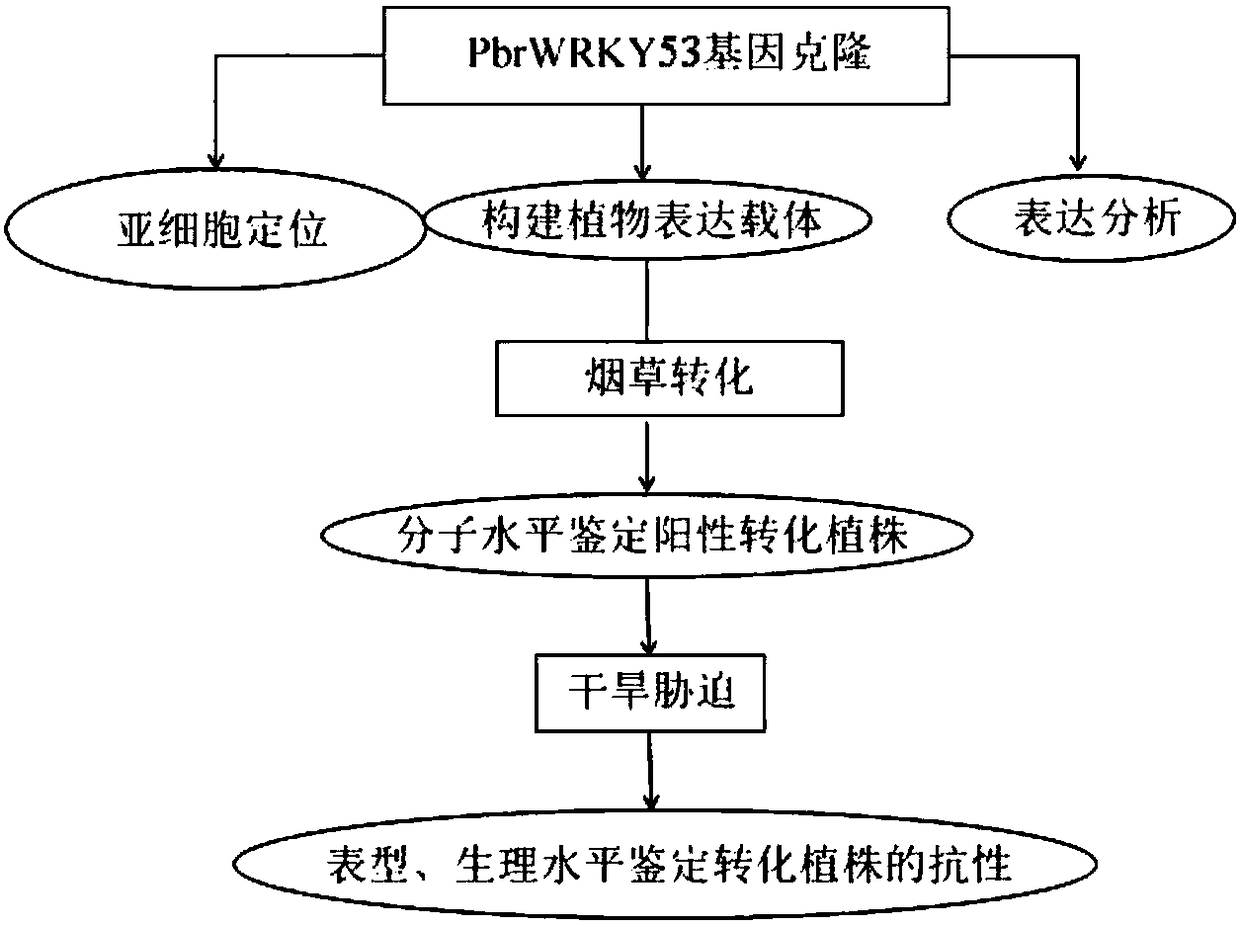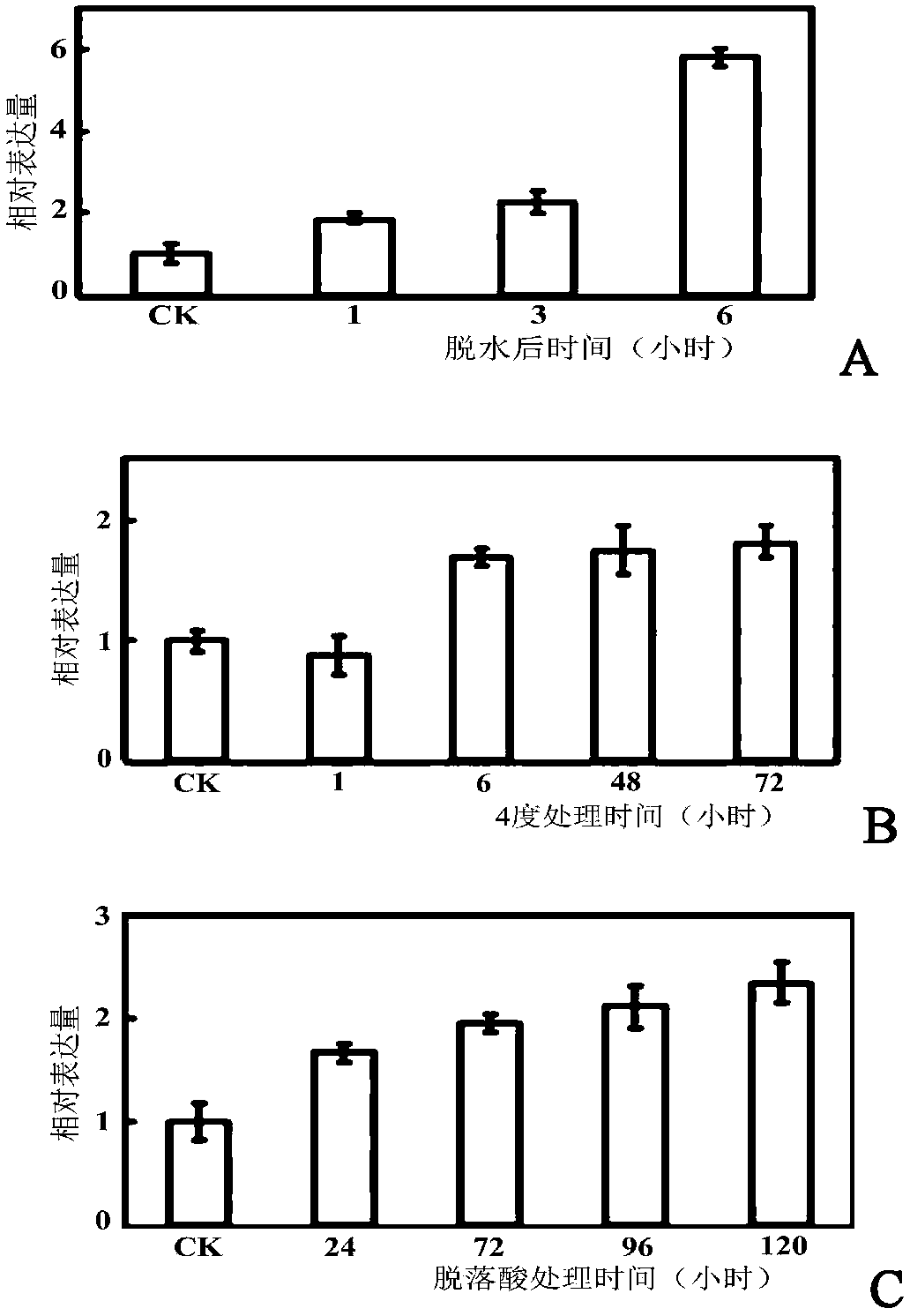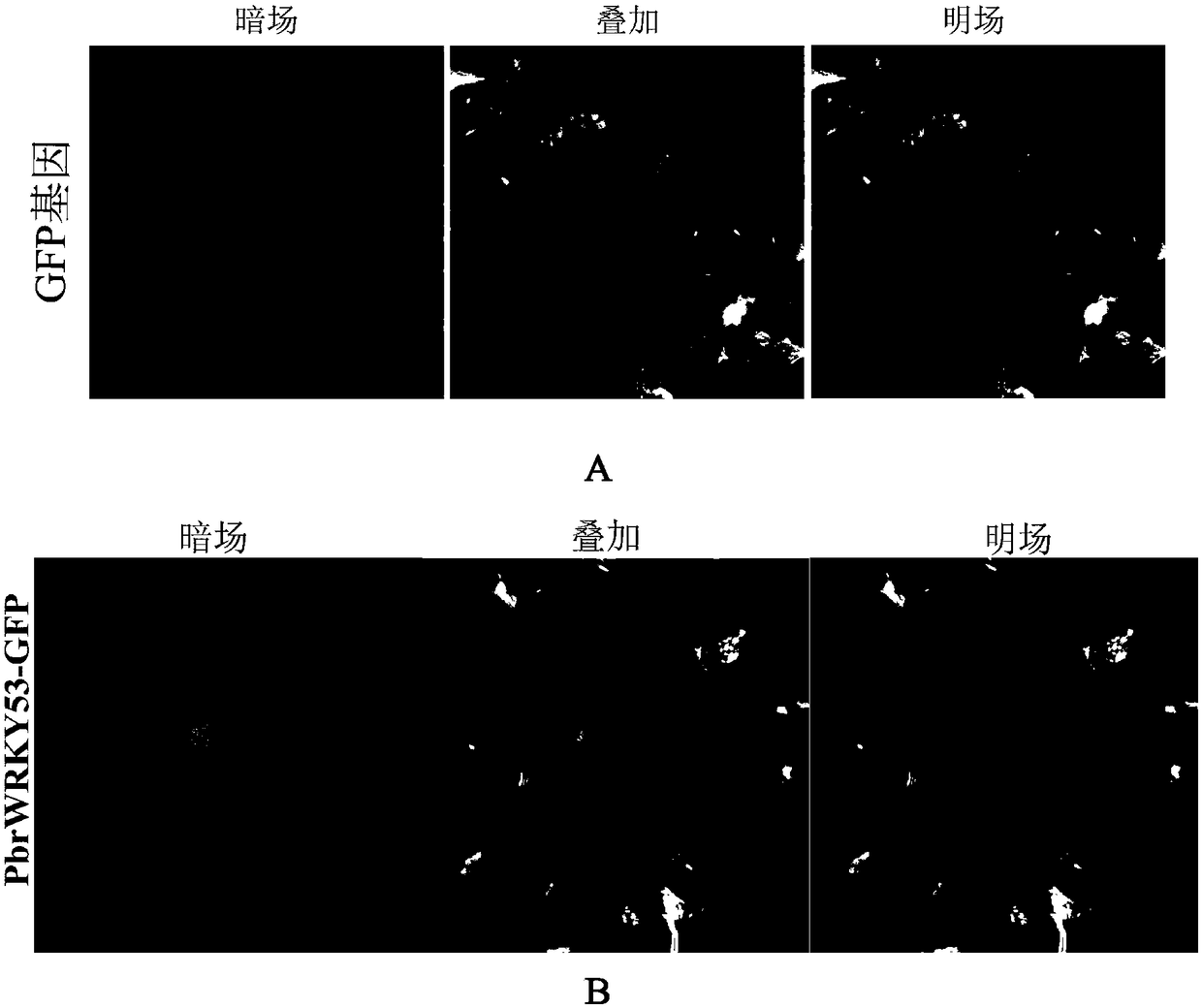Pear drought induction transcription factor PbrWRKY53 and application thereof in aspect of increasing drought resistance of plant
A technology of drought induction and transcription factors, applied in the field of plant genetic engineering, can solve the problems of lack of drought resistance of pears, achieve the effects of improving drought resistance, low active oxygen residues, and reducing agricultural production costs
- Summary
- Abstract
- Description
- Claims
- Application Information
AI Technical Summary
Problems solved by technology
Method used
Image
Examples
Embodiment 1
[0050] Cloning of full-length cDNA of pear PbrWRKY53 gene
[0051] A drought-induced transcription factor PbrWRKY53 was screened by screening pear full-length cNDA library, and primers were designed according to the sequence of PbrWRKY53 gene and Primer premier 5.0, and its full-length was amplified from Du pear by RT-PCR. The detailed steps are as follows:
[0052] The research material Du pear was planted in the National Pear Engineering Center of Nanjing Agricultural University, and its seedling age was 65 days. Select the vigorously growing Du pear seedlings, weigh 0.3g samples at random, and immediately freeze them with liquid nitrogen. RNA was extracted by CTAB method, the specific method is as follows:
[0053] Preparations before the experiment: Use 10% DEPC water to treat various pipette tips, 1.5mL centrifuge tubes, 2mL centrifuge tubes, 50mL cryotubes, mortars and pestles. The required experimental supplies should be processed for more than 12 hours in advance, s...
Embodiment 2
[0062] qRT-PCR analysis of drought-induced transcription factor PbrWRKY53 gene in pear under different stress conditions
[0063] In order to analyze the effect of PbrWRKY53 gene on dehydration ( figure 2 A), low temperature ( figure 2 B) and abscisic acid ( figure 2 C) Response mode, using Real-time PCR technology to analyze the expression mode of PbrWRKY53 gene. The RNA was extracted by the CTAB method, and the synthesis of the first strand of cDNA was carried out according to the operation manual of the TOYOBO reverse transcription kit. In the 20μl reaction system, there are: 10ul 2×Mix, 0.1ul cDNA, 5μl primer (using ubiqutin as the internal reference primer, the length is 208), 4.9ul water. The procedure of quantitative PCR is as follows:
[0064] Table 1 Quantitative PCR program
[0065]
[0066]
[0067] When dehydrating plants, such as figure 2 As shown in A, the transcription level of the PbrWRKY53 gene gradually increased after the plants were dehydrat...
Embodiment 3
[0069] Subcellular localization of drought-induced transcription factor PbrWRKY53 in pear
[0070] According to the nucleotide sequence of the PbrWRKY53 gene and the pJIT166-GFP vector map, NCOI and BSTPI restriction sites were added before and after the gene sequence. The sequence of the restriction site is as follows:
[0071] NCOI: CCATGG
[0072] BSTPI: GGTGACC
[0073] The target gene extraction plasmid with correct sequencing results was used as a template and amplified with primers added with restriction sites. The PCR program used was: pre-denaturation at 94°C for 3 minutes; denaturation at 94°C for 30 seconds, annealing at 58°C for 1 minute, and extension at 72°C for 1 minute and 30 seconds. 35 cycles; 72°C extension for 10 min. The primer sequences of the restriction sites are as follows:
[0074] D-F1: GG CCATGG CTCAGCTTACCCTTCTCACAAATCTG (SEQ ID No. 5)
[0075] D-R1: TT GGTGACC CCTCACCCTTCTGTGTTGTGGGAGCC (SEQ ID No. 6)
[0076] The stop codon TAG was remo...
PUM
| Property | Measurement | Unit |
|---|---|---|
| molecular weight | aaaaa | aaaaa |
Abstract
Description
Claims
Application Information
 Login to View More
Login to View More - R&D
- Intellectual Property
- Life Sciences
- Materials
- Tech Scout
- Unparalleled Data Quality
- Higher Quality Content
- 60% Fewer Hallucinations
Browse by: Latest US Patents, China's latest patents, Technical Efficacy Thesaurus, Application Domain, Technology Topic, Popular Technical Reports.
© 2025 PatSnap. All rights reserved.Legal|Privacy policy|Modern Slavery Act Transparency Statement|Sitemap|About US| Contact US: help@patsnap.com



